
SEED-Bench
(CVPR2024)A benchmark for evaluating Multimodal LLMs using multiple-choice questions.
Stars: 240

SEED-Bench is a comprehensive benchmark for evaluating the performance of multimodal large language models (LLMs) on a wide range of tasks that require both text and image understanding. It consists of two versions: SEED-Bench-1 and SEED-Bench-2. SEED-Bench-1 focuses on evaluating the spatial and temporal understanding of LLMs, while SEED-Bench-2 extends the evaluation to include text and image generation tasks. Both versions of SEED-Bench provide a diverse set of tasks that cover different aspects of multimodal understanding, making it a valuable tool for researchers and practitioners working on LLMs.
README:
SEED-Bench-2-Plus comprises 2.3K multiple-choice questions with precise human annotations, spanning three broad categories: Charts, Maps, and Webs, each of which covers a wide spectrum of textrich scenarios in the real world.
SEED-Bench-2 comprises 24K multiple-choice questions with accurate human annotations, which spans 27 dimensions, including the evaluation of both text and image generation.
SEED-Bench-1 consists of 19K multiple-choice questions with accurate human annotations, covering 12 evaluation dimensions including both the spatial and temporal understanding.
[2024.4.26] We are excited to announce the release of SEED-Bench-2-Plus, a benchmark specifically designed for text-rich visual comprehension. The accompanying dataset is released on SEED-Bench-2-Plus.
[2024.4.23] We are pleased to share the comprehensive evaluation results for Gemini-Vision-Pro and Claude-3-Opus on SEED-Bench-1 and SEED-Bench-2. You can access detailed performance on the SEED-Bench Leaderboard. Please note that for Gemini-Vision-Pro we only report task performance when the model responds with at least 50% valid data in the task.
[2024.2.27] SEED-Bench is accepted by CVPR 2024.
[2023.12.18] We have placed the comprehensive evaluation results for GPT-4v on SEED-Bench-1 and SEED-Bench-2. These can be accessed at GPT-4V for SEED-Bench-1 and GPT-4V for SEED-Bench-2. If you're interested, please feel free to take a look.
[2023.12.4] We have updated the SEED-Bench Leaderboard for SEED-Bench-2. Additionally, we have updated the evaluation results for GPT-4v on both SEED-Bench-1 and SEED-Bench-2. If you are interested, please visit the SEED-Bench Leaderboard for more details.
[2023.11.30] We have updated the SEED-Bench-v1 JSON (manually screening the multiple-choice questions for videos) and provided corresponding video frames for easier testing. Please refer to SEED-Bench for more information.
[2023.11.27] SEED-Bench-2 is released! Data and evaluation code is available now.
[2023.9.9] We are actively looking for self-motivated interns. Please feel free to reach out if you are interested.
[2023.8.16] SEED-Bench Leaderboard is released! You can upload your model's results now.
[2023.7.30] SEED-Bench is released! Data and evaluation code is available now.
Welcome to SEED-Bench Leaderboard!
You can submit your model results in SEED-Bench Leaderboard now. You can use our evaluation code to obtain 'results.json' in 'results' folder as below.
python eval.py --model instruct_blip --anno_path SEED-Bench.json --output-dir results --task allThen you can upload 'results.json' in SEED-Bench Leaderboard.
After submitting, please press refresh button to get the latest results.
You can download the data of SEED-Bench released on HuggingFace repo SEED-Bench, SEED-Bench-2, and SEED-Bench-2-Plus. Please refer to DATASET.md for data preparation.
Please refer to INSTALL.md.
Please refer to EVALUATION.md.
SEED-Bench is released under Apache License Version 2.0.
Data Sources: Data from the internet under CC-BY licenses.
Please contact us if you believe any data infringes upon your rights, and we will remove it.
Data Sources:
- Dimensions 1-9, 23 (In-Context Captioning): Conceptual Captions Dataset (https://ai.google.com/research/ConceptualCaptions/) under its license (https://github.com/google-research-datasets/conceptual-captions/blob/master/LICENSE). Copyright belongs to the original dataset owner.
- Dimension 9 (Text Recognition): ICDAR2003 (http://www.imglab.org/db/index.html), ICDAR2013(https://rrc.cvc.uab.es/?ch=2), IIIT5k(https://cvit.iiit.ac.in/research/projects/cvit-projects/the-iiit-5k-word-dataset), and SVT(http://vision.ucsd.edu/~kai/svt/). Copyright belongs to the original dataset owner.
- Dimension 10 (Celebrity Recognition): MME (https://github.com/BradyFU/Awesome-Multimodal-Large-Language-Models/tree/Evaluation) and MMBench (https://github.com/open-compass/MMBench) under MMBench license (https://github.com/open-compass/MMBench/blob/main/LICENSE). Copyright belongs to the original dataset owners.
- Dimension 11 (Landmark Recognition): Google Landmark Dataset v2 (https://github.com/cvdfoundation/google-landmark) under CC-BY licenses without ND restrictions.
- Dimension 12 (Chart Understanding): PlotQA (https://github.com/NiteshMethani/PlotQA) under its license (https://github.com/NiteshMethani/PlotQA/blob/master/LICENSE).
- Dimension 13 (Visual Referring Expression): VCR (http://visualcommonsense.com) under its license (http://visualcommonsense.com/license/).
- Dimension 14 (Science Knowledge): ScienceQA (https://github.com/lupantech/ScienceQA) under its license (https://github.com/lupantech/ScienceQA/blob/main/LICENSE-DATA).
- Dimension 15 (Emotion Recognition): FER2013 (https://www.kaggle.com/competitions/challenges-in-representation-learning-facial-expression-recognition-challenge/data) under its license (https://www.kaggle.com/competitions/challenges-in-representation-learning-facial-expression-recognition-challenge/rules#7-competition-data).
- Dimension 16 (Visual Mathematics): MME (https://github.com/BradyFU/Awesome-Multimodal-Large-Language-Models/tree/Evaluation) and data from the internet under CC-BY licenses.
- Dimension 17 (Difference Spotting): MIMICIT (https://github.com/Luodian/Otter/blob/main/mimic-it/README.md) under its license (https://github.com/Luodian/Otter/tree/main/mimic-it#eggs).
- Dimension 18 (Meme Comprehension): Data from the internet under CC-BY licenses.
- Dimension 19 (Global Video Understanding): Charades (https://prior.allenai.org/projects/charades) under its license (https://prior.allenai.org/projects/data/charades/license.txt). SEED-Bench-2 provides 8 frames per video.
- Dimensions 20-22 (Action Recognition, Action Prediction, Procedure Understanding): Something-Something v2 (https://developer.qualcomm.com/software/ai-datasets/something-something), Epic-Kitchen 100 (https://epic-kitchens.github.io/2023), and Breakfast (https://serre-lab.clps.brown.edu/resource/breakfast-actions-dataset/). SEED-Bench-2 provides 8 frames per video.
- Dimension 24 (Interleaved Image-Text Analysis): Data from the internet under CC-BY licenses.
- Dimension 25 (Text-to-Image Generation): CC-500 (https://github.com/weixi-feng/Structured-Diffusion-Guidance) and ABC-6k (https://github.com/weixi-feng/Structured-Diffusion-Guidance) under their license (https://github.com/weixi-feng/Structured-Diffusion-Guidance/blob/master/LICENSE), with images generated by Stable-Diffusion-XL (https://huggingface.co/stabilityai/stable-diffusion-xl-base-1.0) under its license (https://huggingface.co/stabilityai/stable-diffusion-xl-base-1.0/blob/main/LICENSE.md).
- Dimension 26 (Next Image Prediction): Epic-Kitchen 100 (https://epic-kitchens.github.io/2023) under its license (https://creativecommons.org/licenses/by-nc/4.0/).
- Dimension 27 (Text-Image Creation): Data from the internet under CC-BY licenses.
Please contact us if you believe any data infringes upon your rights, and we will remove it.
For the images of SEED-Bench-1, we use the data from Conceptual Captions Dataset (https://ai.google.com/research/ConceptualCaptions/) following its license (https://github.com/google-research-datasets/conceptual-captions/blob/master/LICENSE). Tencent does not hold the copyright for these images and the copyright belongs to the original owner of Conceptual Captions Dataset.
For the videos of SEED-Bench-1, we use tha data from Something-Something v2 (https://developer.qualcomm.com/software/ai-datasets/something-something), Epic-kitchen 100 (https://epic-kitchens.github.io/2023) and Breakfast (https://serre-lab.clps.brown.edu/resource/breakfast-actions-dataset/). We only provide the video name. Please download them in their official websites.
If you find this repository helpful, please consider citing it:
@article{li2023seed2,
title={SEED-Bench-2: Benchmarking Multimodal Large Language Models},
author={Li, Bohao and Ge, Yuying and Ge, Yixiao and Wang, Guangzhi and Wang, Rui and Zhang, Ruimao and Shan, Ying},
journal={arXiv preprint arXiv:2311.17092},
year={2023}
}
@article{li2023seed,
title={Seed-bench: Benchmarking multimodal llms with generative comprehension},
author={Li, Bohao and Wang, Rui and Wang, Guangzhi and Ge, Yuying and Ge, Yixiao and Shan, Ying},
journal={arXiv preprint arXiv:2307.16125},
year={2023}
}
For Tasks:
Click tags to check more tools for each tasksFor Jobs:
Alternative AI tools for SEED-Bench
Similar Open Source Tools

SEED-Bench
SEED-Bench is a comprehensive benchmark for evaluating the performance of multimodal large language models (LLMs) on a wide range of tasks that require both text and image understanding. It consists of two versions: SEED-Bench-1 and SEED-Bench-2. SEED-Bench-1 focuses on evaluating the spatial and temporal understanding of LLMs, while SEED-Bench-2 extends the evaluation to include text and image generation tasks. Both versions of SEED-Bench provide a diverse set of tasks that cover different aspects of multimodal understanding, making it a valuable tool for researchers and practitioners working on LLMs.

FuseAI
FuseAI is a repository that focuses on knowledge fusion of large language models. It includes FuseChat, a state-of-the-art 7B LLM on MT-Bench, and FuseLLM, which surpasses Llama-2-7B by fusing three open-source foundation LLMs. The repository provides tech reports, releases, and datasets for FuseChat and FuseLLM, showcasing their performance and advancements in the field of chat models and large language models.
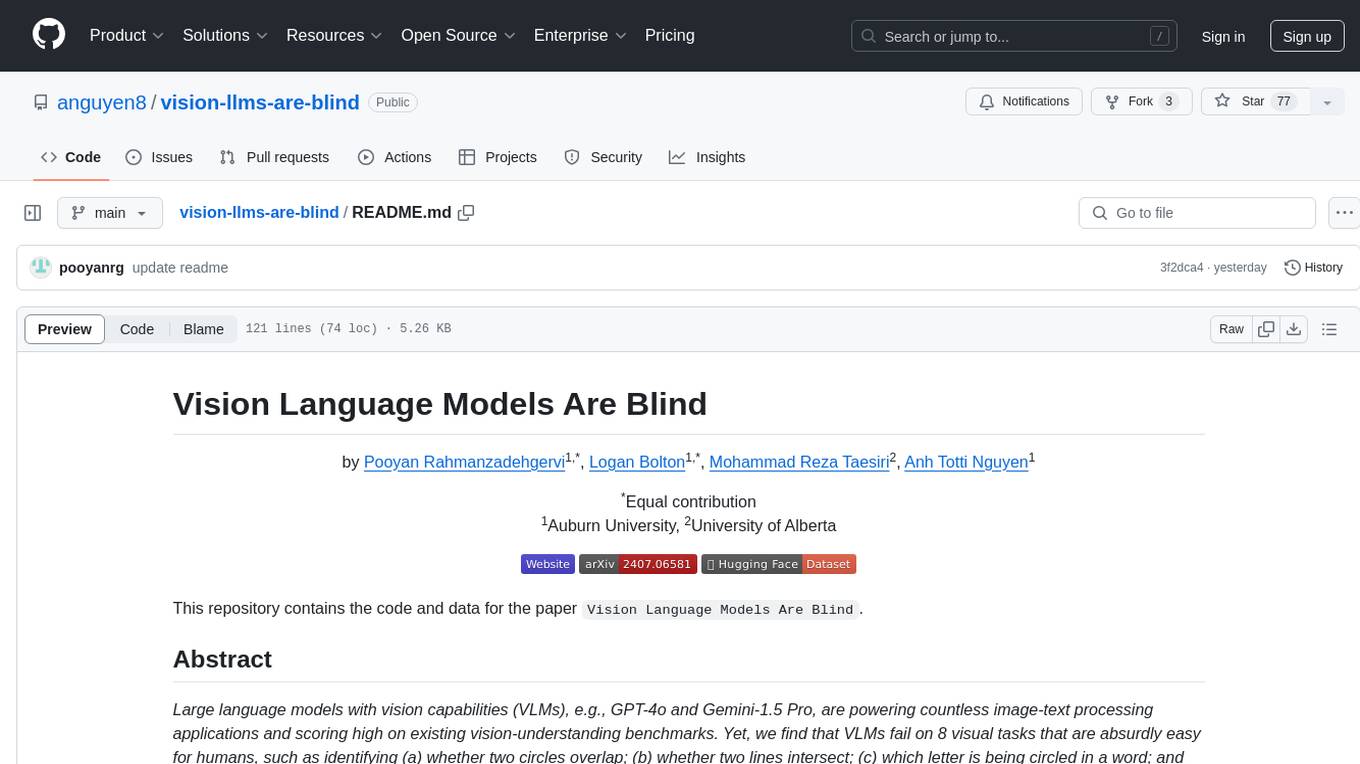
vision-llms-are-blind
This repository contains the code and data for the paper 'Vision Language Models Are Blind'. It explores the limitations of large language models with vision capabilities (VLMs) in performing basic visual tasks that are easy for humans. The repository presents benchmark results showcasing the poor performance of state-of-the-art VLMs on tasks like counting line intersections, identifying circles, letters, and shapes, and following color-coded paths. The research highlights the challenges faced by VLMs in understanding visual information accurately, drawing parallels to myopia and blindness in human vision.

LLM-Fine-Tuning-Azure
A fine-tuning guide for both OpenAI and Open-Source Large Language Models on Azure. Fine-Tuning retrains an existing pre-trained LLM using example data, resulting in a new 'custom' fine-tuned LLM optimized for task-specific examples. Use cases include improving LLM performance on specific tasks and introducing information not well represented by the base LLM model. Suitable for cases where latency is critical, high accuracy is required, and clear evaluation metrics are available. Learning path includes labs for fine-tuning GPT and Llama2 models via Dashboards and Python SDK.
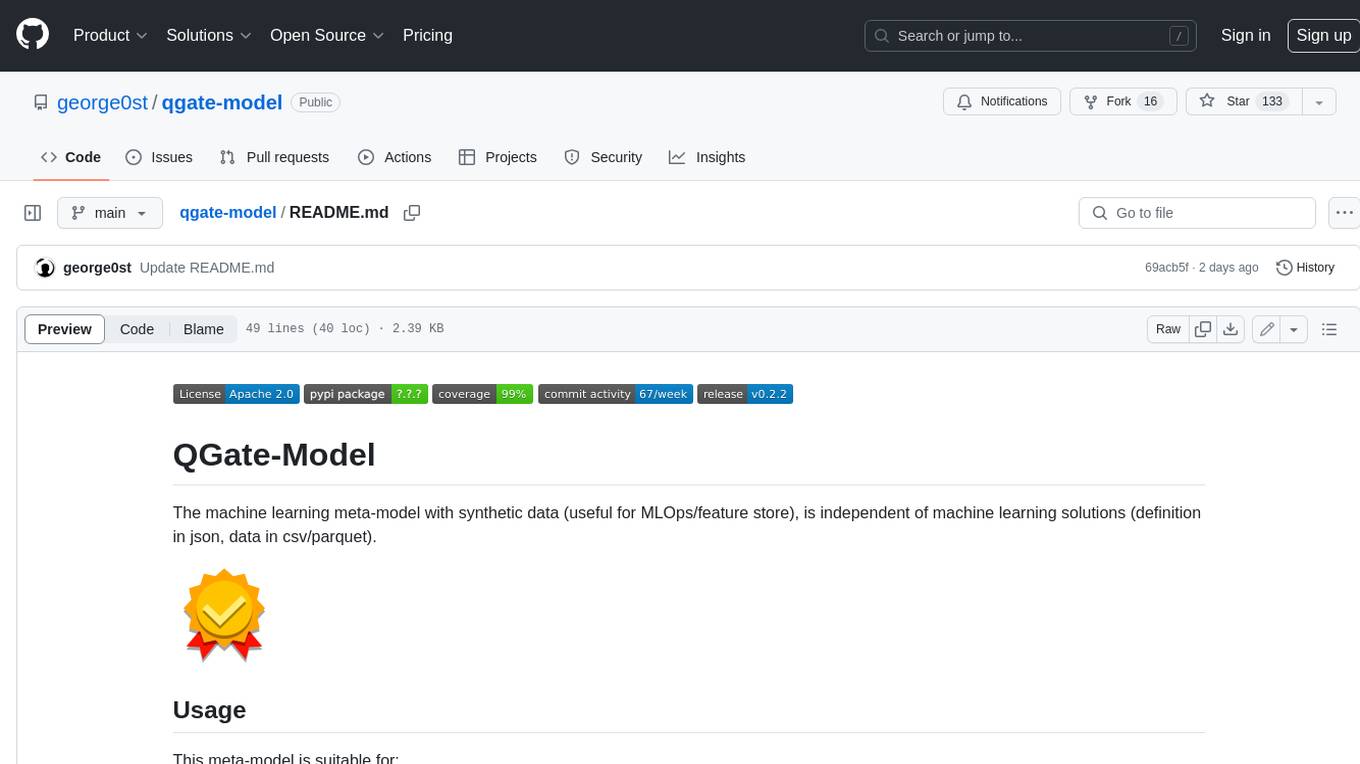
qgate-model
QGate-Model is a machine learning meta-model with synthetic data, designed for MLOps and feature store. It is independent of machine learning solutions, with definitions in JSON and data in CSV/parquet formats. This meta-model is useful for comparing capabilities and functions of machine learning solutions, independently testing new versions of machine learning solutions, and conducting various types of tests (unit, sanity, smoke, system, regression, function, acceptance, performance, shadow, etc.). It can also be used for external test coverage when internal test coverage is not available or weak.

chronos-forecasting
Chronos is a family of pretrained time series forecasting models based on language model architectures. A time series is transformed into a sequence of tokens via scaling and quantization, and a language model is trained on these tokens using the cross-entropy loss. Once trained, probabilistic forecasts are obtained by sampling multiple future trajectories given the historical context. Chronos models have been trained on a large corpus of publicly available time series data, as well as synthetic data generated using Gaussian processes.

TeroSubtitler
Tero Subtitler is an open source, cross-platform, and free subtitle editing software with a user-friendly interface. It offers fully fledged editing with SMPTE and MEDIA modes, support for various subtitle formats, multi-level undo/redo, search and replace, auto-backup, source and transcription modes, translation memory, audiovisual preview, timeline with waveform visualizer, manipulation tools, formatting options, quality control features, translation and transcription capabilities, validation tools, automation for correcting errors, and more. It also includes features like exporting subtitles to MP3, importing/exporting Blu-ray SUP format, generating blank video, generating video with hardcoded subtitles, video dubbing, and more. The tool utilizes powerful multimedia playback engines like mpv, advanced audio/video manipulation tools like FFmpeg, tools for automatic transcription like whisper.cpp/Faster-Whisper, auto-translation API like Google Translate, and ElevenLabs TTS for video dubbing.

Awesome-LLM-Quantization
Awesome-LLM-Quantization is a curated list of resources related to quantization techniques for Large Language Models (LLMs). Quantization is a crucial step in deploying LLMs on resource-constrained devices, such as mobile phones or edge devices, by reducing the model's size and computational requirements.

3FS
The Fire-Flyer File System (3FS) is a high-performance distributed file system designed for AI training and inference workloads. It leverages modern SSDs and RDMA networks to provide a shared storage layer that simplifies development of distributed applications. Key features include performance, disaggregated architecture, strong consistency, file interfaces, data preparation, dataloaders, checkpointing, and KVCache for inference. The system is well-documented with design notes, setup guide, USRBIO API reference, and P specifications. Performance metrics include peak throughput, GraySort benchmark results, and KVCache optimization. The source code is available on GitHub for cloning and installation of dependencies. Users can build 3FS and run test clusters following the provided instructions. Issues can be reported on the GitHub repository.

langtest
LangTest is a comprehensive evaluation library for custom LLM and NLP models. It aims to deliver safe and effective language models by providing tools to test model quality, augment training data, and support popular NLP frameworks. LangTest comes with benchmark datasets to challenge and enhance language models, ensuring peak performance in various linguistic tasks. The tool offers more than 60 distinct types of tests with just one line of code, covering aspects like robustness, bias, representation, fairness, and accuracy. It supports testing LLMS for question answering, toxicity, clinical tests, legal support, factuality, sycophancy, and summarization.

only_train_once
Only Train Once (OTO) is an automatic, architecture-agnostic DNN training and compression framework that allows users to train a general DNN from scratch or a pretrained checkpoint to achieve high performance and slimmer architecture simultaneously in a one-shot manner without fine-tuning. The framework includes features for automatic structured pruning and erasing operators, as well as hybrid structured sparse optimizers for efficient model compression. OTO provides tools for pruning zero-invariant group partitioning, constructing pruned models, and visualizing pruning and erasing dependency graphs. It supports the HESSO optimizer and offers a sanity check for compliance testing on various DNNs. The repository also includes publications, installation instructions, quick start guides, and a roadmap for future enhancements and collaborations.
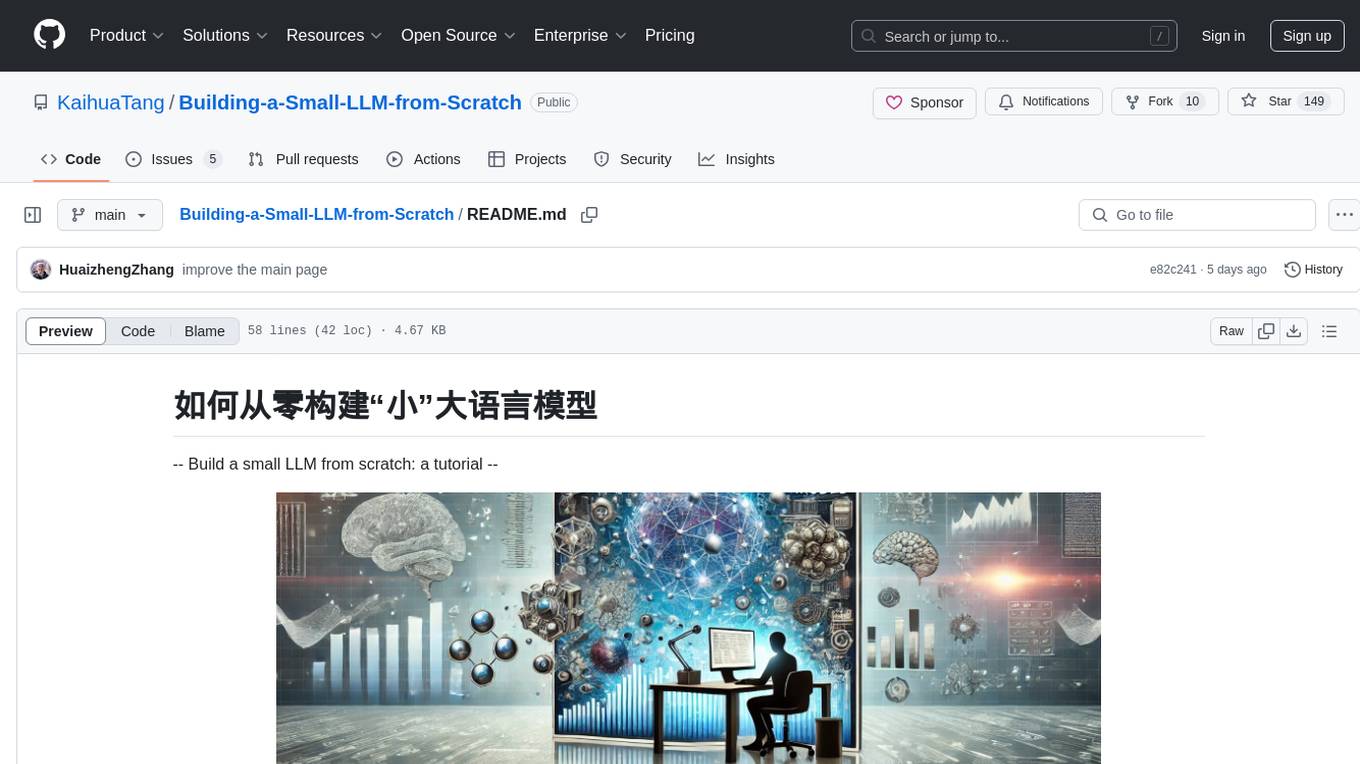
Building-a-Small-LLM-from-Scratch
This tutorial provides a comprehensive guide on building a small Large Language Model (LLM) from scratch using PyTorch. The author shares insights and experiences gained from working on LLM projects in the industry, aiming to help beginners understand the fundamental components of LLMs and training fine-tuning codes. The tutorial covers topics such as model structure overview, attention modules, optimization techniques, normalization layers, tokenizers, pretraining, and fine-tuning with dialogue data. It also addresses specific industry-related challenges and explores cutting-edge model concepts like DeepSeek network structure, causal attention, dynamic-to-static tensor conversion for ONNX inference, and performance optimizations for NPU chips. The series emphasizes hands-on practice with small models to enable local execution and plans to expand into multimodal language models and tensor parallel multi-card deployment.
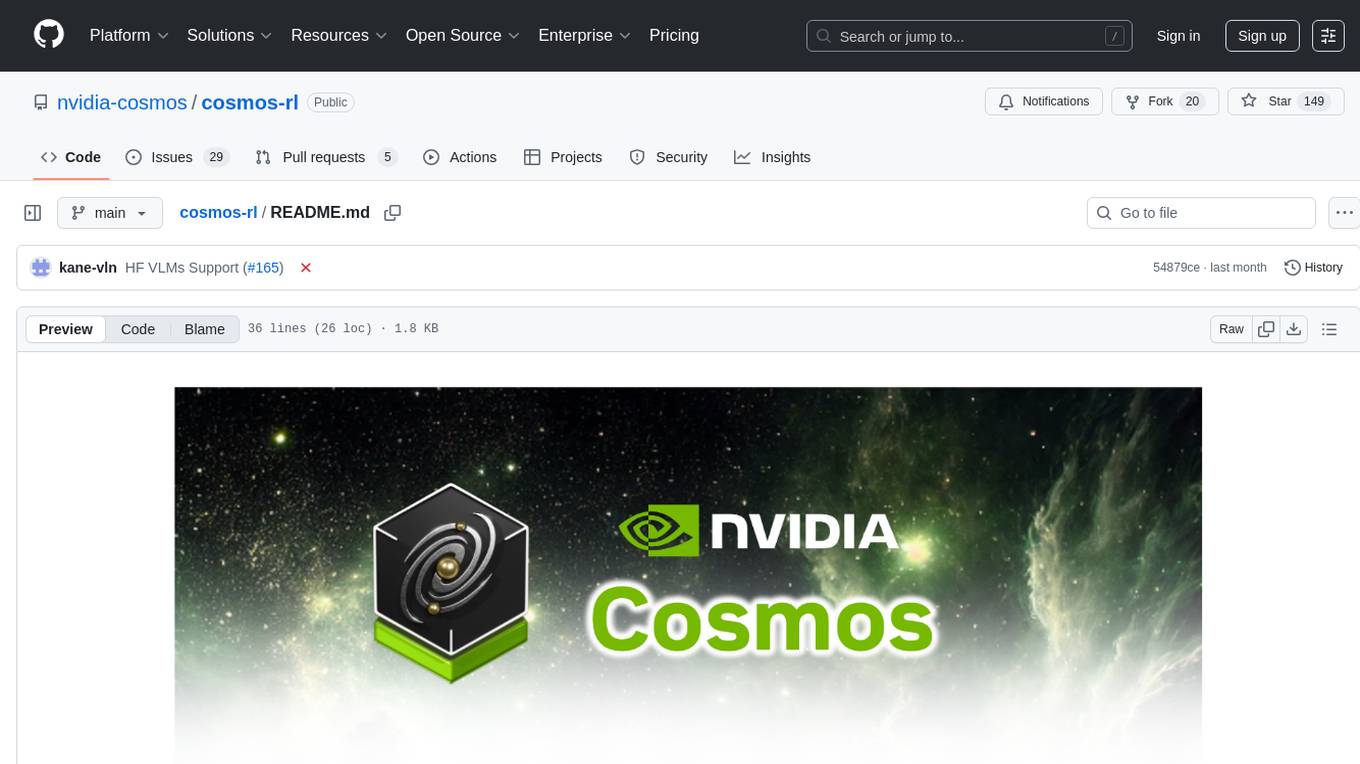
cosmos-rl
Cosmos-RL is a flexible and scalable Reinforcement Learning framework specialized for Physical AI applications. It provides a toolchain for large scale RL training workload with features like parallelism, asynchronous processing, low-precision training support, and a single-controller architecture. The system architecture includes Tensor Parallelism, Sequence Parallelism, Context Parallelism, FSDP Parallelism, and Pipeline Parallelism. It also utilizes a messaging system for coordinating policy and rollout replicas, along with dynamic NCCL Process Groups for fault-tolerant and elastic large-scale RL training.
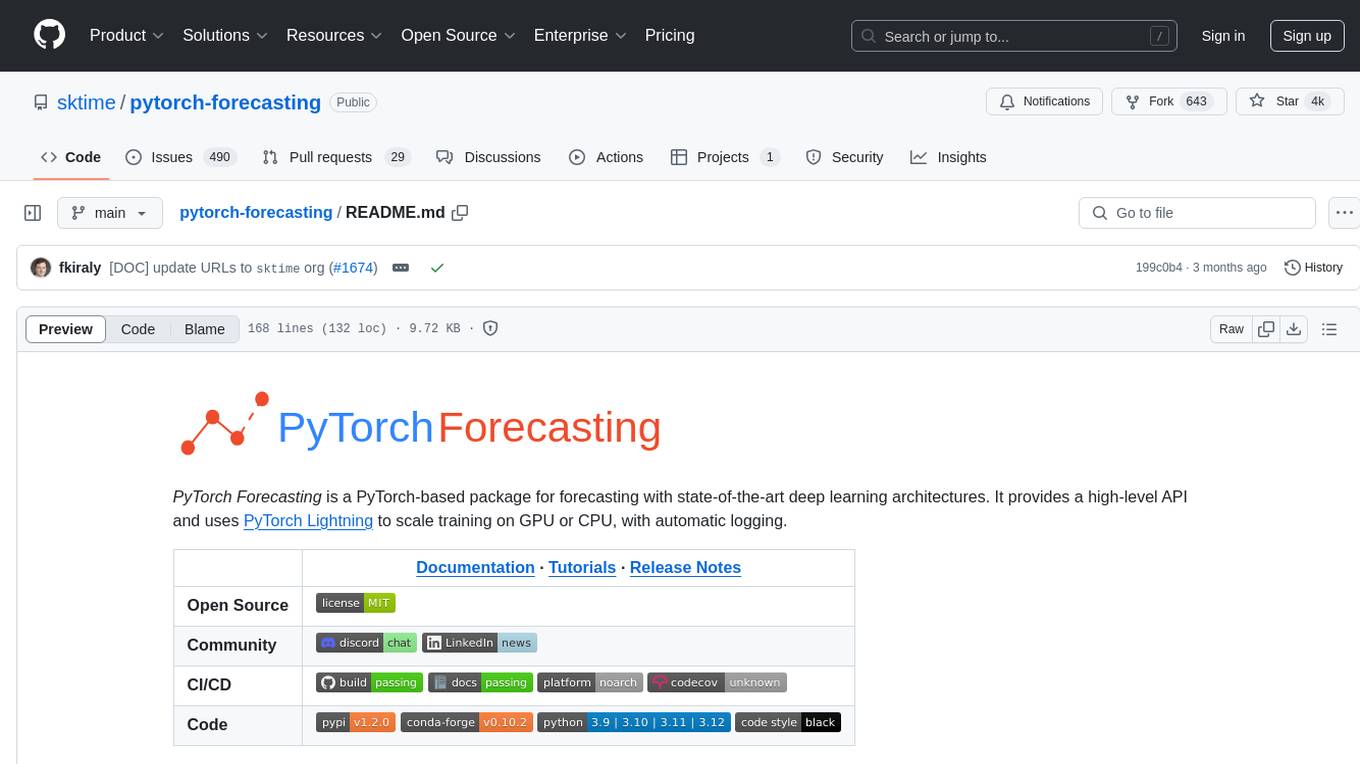
pytorch-forecasting
PyTorch Forecasting is a PyTorch-based package designed for state-of-the-art timeseries forecasting using deep learning architectures. It offers a high-level API and leverages PyTorch Lightning for efficient training on GPU or CPU with automatic logging. The package aims to simplify timeseries forecasting tasks by providing a flexible API for professionals and user-friendly defaults for beginners. It includes features such as a timeseries dataset class for handling data transformations, missing values, and subsampling, various neural network architectures optimized for real-world deployment, multi-horizon timeseries metrics, and hyperparameter tuning with optuna. Built on pytorch-lightning, it supports training on CPUs, single GPUs, and multiple GPUs out-of-the-box.
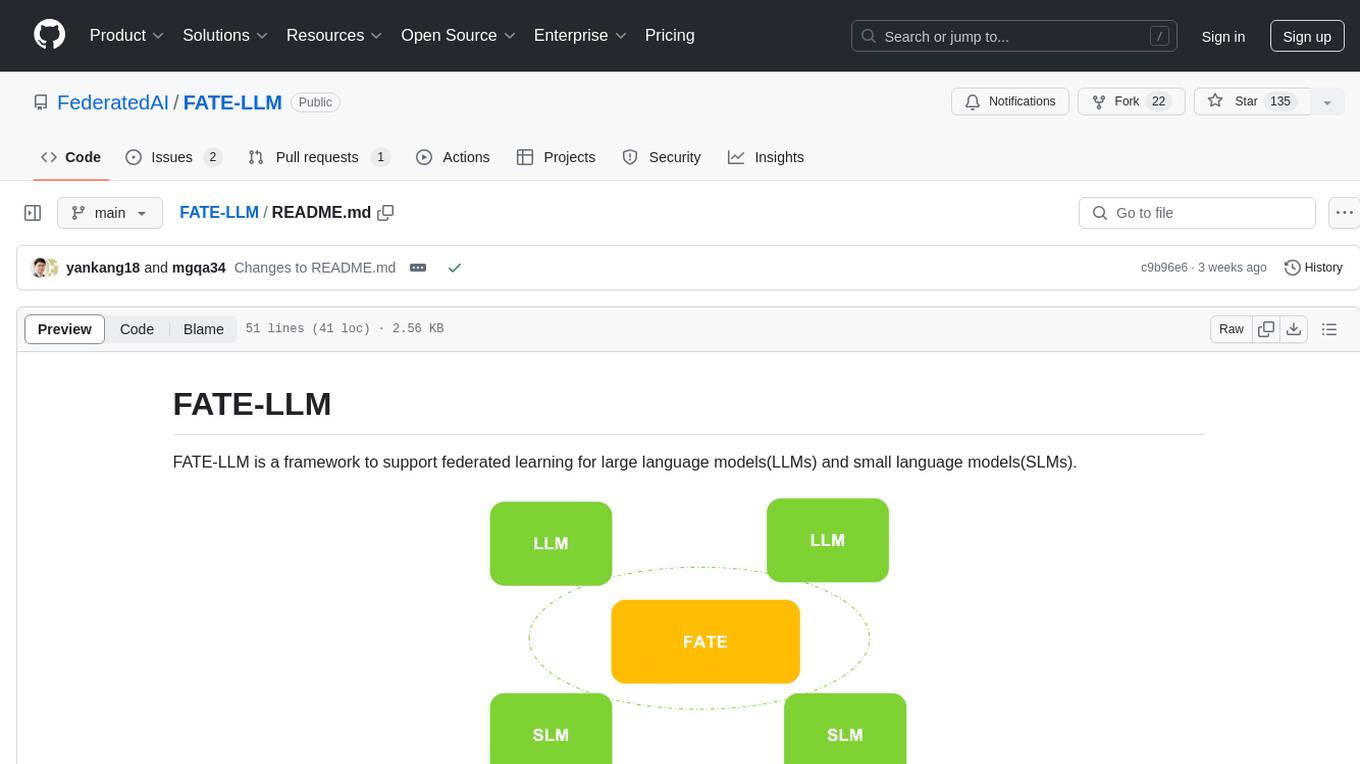
FATE-LLM
FATE-LLM is a framework supporting federated learning for large and small language models. It promotes training efficiency of federated LLMs using Parameter-Efficient methods, protects the IP of LLMs using FedIPR, and ensures data privacy during training and inference through privacy-preserving mechanisms.
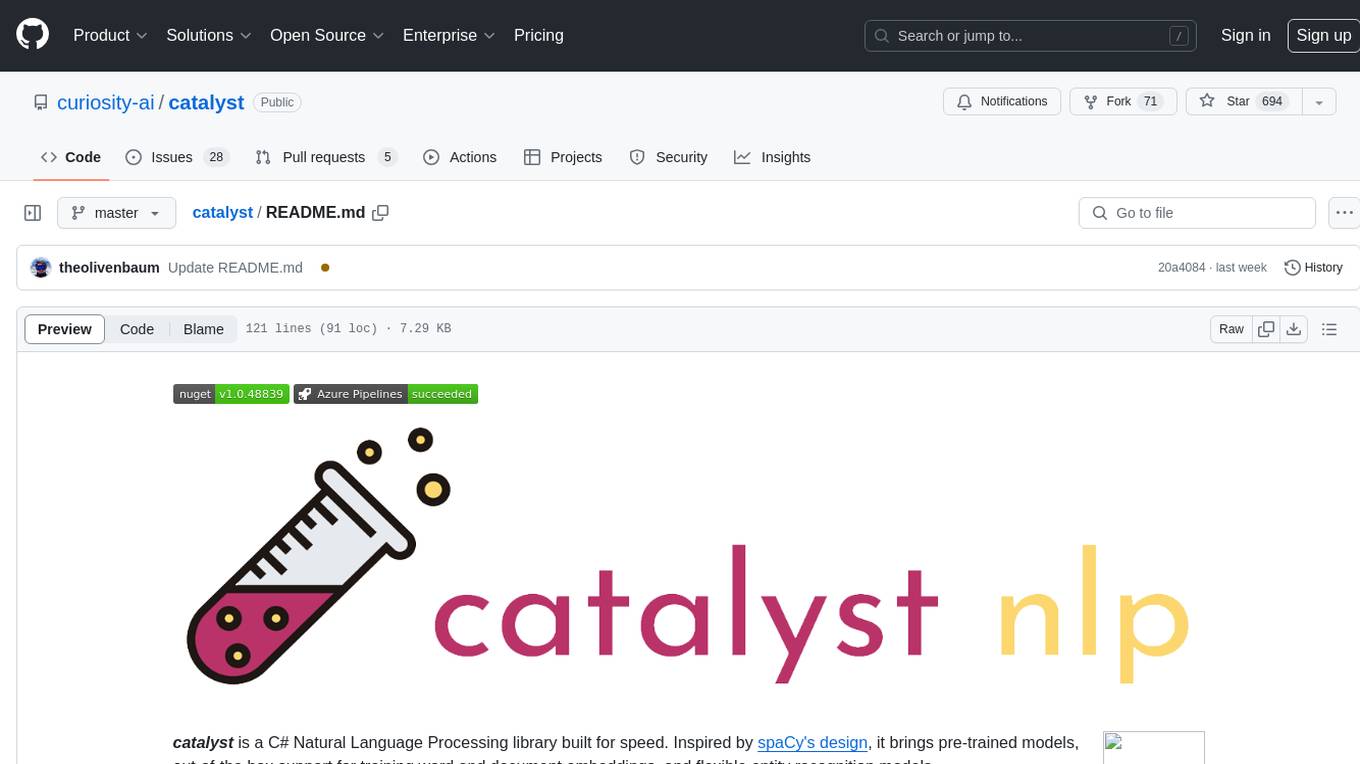
catalyst
Catalyst is a C# Natural Language Processing library designed for speed, inspired by spaCy's design. It provides pre-trained models, support for training word and document embeddings, and flexible entity recognition models. The library is fast, modern, and pure-C#, supporting .NET standard 2.0. It is cross-platform, running on Windows, Linux, macOS, and ARM. Catalyst offers non-destructive tokenization, named entity recognition, part-of-speech tagging, language detection, and efficient binary serialization. It includes pre-built models for language packages and lemmatization. Users can store and load models using streams. Getting started with Catalyst involves installing its NuGet Package and setting the storage to use the online repository. The library supports lazy loading of models from disk or online. Users can take advantage of C# lazy evaluation and native multi-threading support to process documents in parallel. Training a new FastText word2vec embedding model is straightforward, and Catalyst also provides algorithms for fast embedding search and dimensionality reduction.
For similar tasks

llava-docker
This Docker image for LLaVA (Large Language and Vision Assistant) provides a convenient way to run LLaVA locally or on RunPod. LLaVA is a powerful AI tool that combines natural language processing and computer vision capabilities. With this Docker image, you can easily access LLaVA's functionalities for various tasks, including image captioning, visual question answering, text summarization, and more. The image comes pre-installed with LLaVA v1.2.0, Torch 2.1.2, xformers 0.0.23.post1, and other necessary dependencies. You can customize the model used by setting the MODEL environment variable. The image also includes a Jupyter Lab environment for interactive development and exploration. Overall, this Docker image offers a comprehensive and user-friendly platform for leveraging LLaVA's capabilities.

SEED-Bench
SEED-Bench is a comprehensive benchmark for evaluating the performance of multimodal large language models (LLMs) on a wide range of tasks that require both text and image understanding. It consists of two versions: SEED-Bench-1 and SEED-Bench-2. SEED-Bench-1 focuses on evaluating the spatial and temporal understanding of LLMs, while SEED-Bench-2 extends the evaluation to include text and image generation tasks. Both versions of SEED-Bench provide a diverse set of tasks that cover different aspects of multimodal understanding, making it a valuable tool for researchers and practitioners working on LLMs.
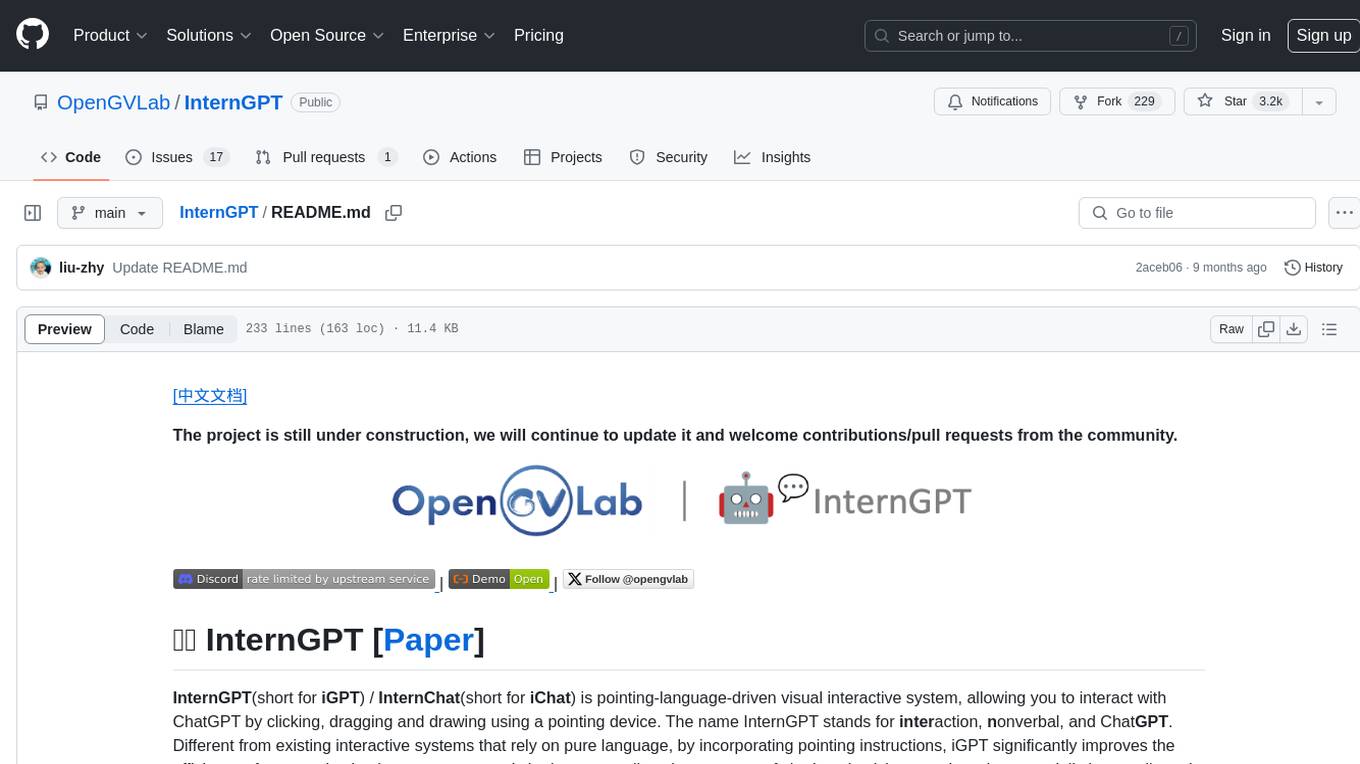
InternGPT
InternGPT (iGPT) is a pointing-language-driven visual interactive system that enhances communication between users and chatbots by incorporating pointing instructions. It improves chatbot accuracy in vision-centric tasks, especially in complex visual scenarios. The system includes an auxiliary control mechanism to enhance the control capability of the language model. InternGPT features a large vision-language model called Husky, fine-tuned for high-quality multi-modal dialogue. Users can interact with ChatGPT by clicking, dragging, and drawing using a pointing device, leading to efficient communication and improved chatbot performance in vision-related tasks.
For similar jobs
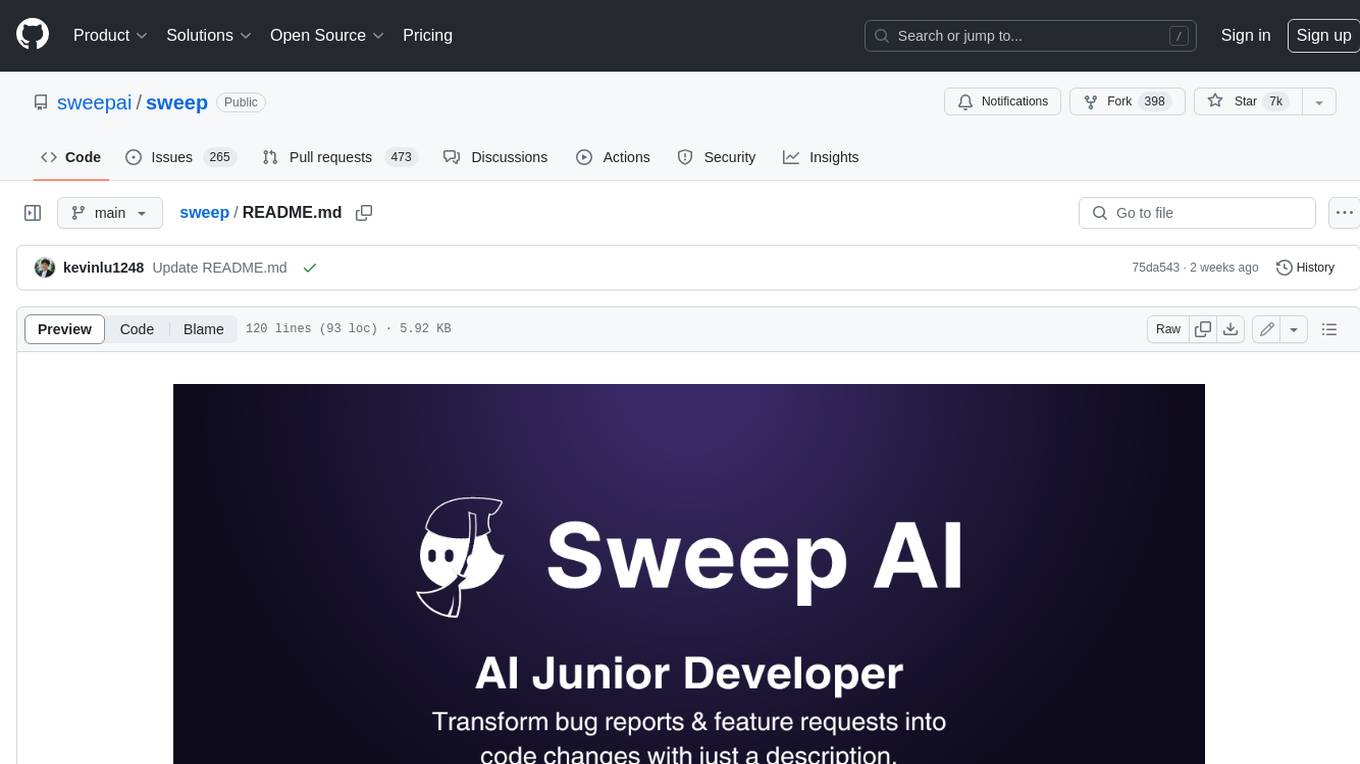
sweep
Sweep is an AI junior developer that turns bugs and feature requests into code changes. It automatically handles developer experience improvements like adding type hints and improving test coverage.
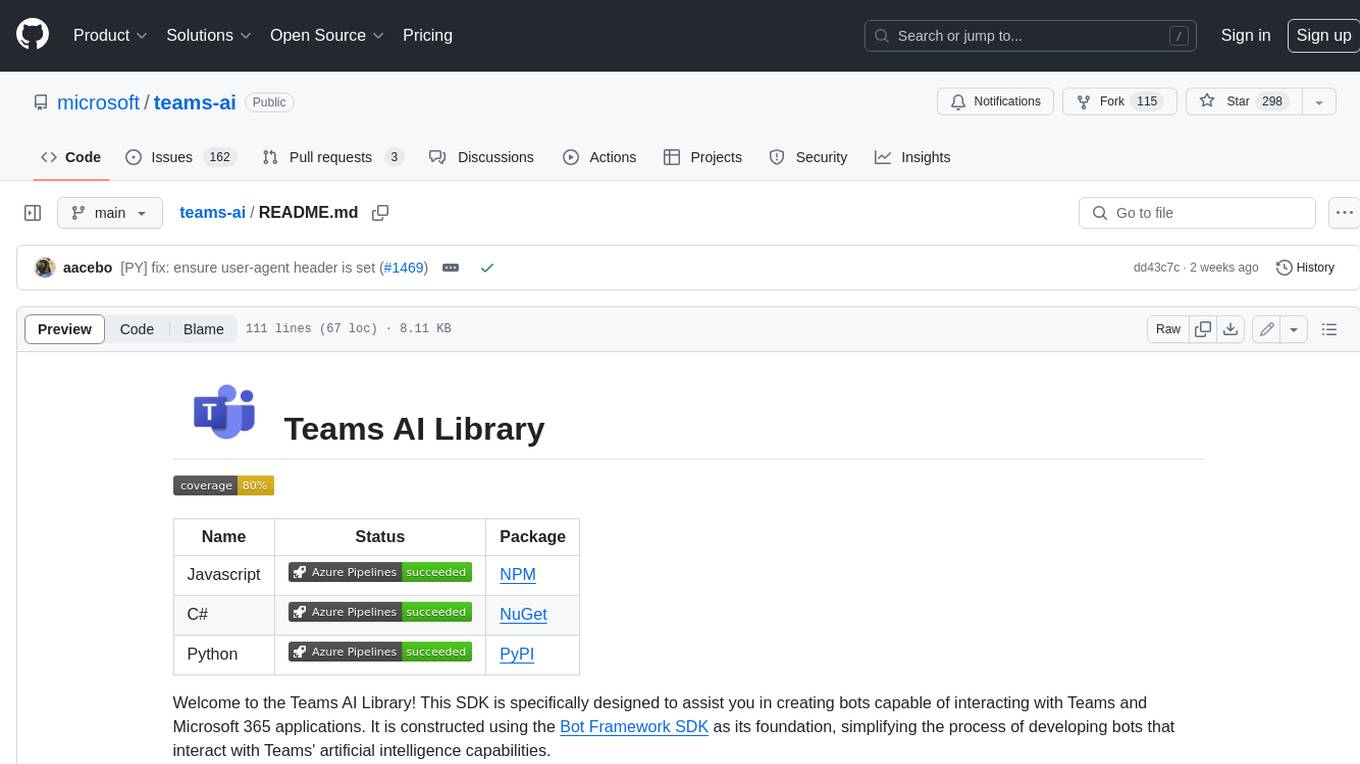
teams-ai
The Teams AI Library is a software development kit (SDK) that helps developers create bots that can interact with Teams and Microsoft 365 applications. It is built on top of the Bot Framework SDK and simplifies the process of developing bots that interact with Teams' artificial intelligence capabilities. The SDK is available for JavaScript/TypeScript, .NET, and Python.

ai-guide
This guide is dedicated to Large Language Models (LLMs) that you can run on your home computer. It assumes your PC is a lower-end, non-gaming setup.

classifai
Supercharge WordPress Content Workflows and Engagement with Artificial Intelligence. Tap into leading cloud-based services like OpenAI, Microsoft Azure AI, Google Gemini and IBM Watson to augment your WordPress-powered websites. Publish content faster while improving SEO performance and increasing audience engagement. ClassifAI integrates Artificial Intelligence and Machine Learning technologies to lighten your workload and eliminate tedious tasks, giving you more time to create original content that matters.
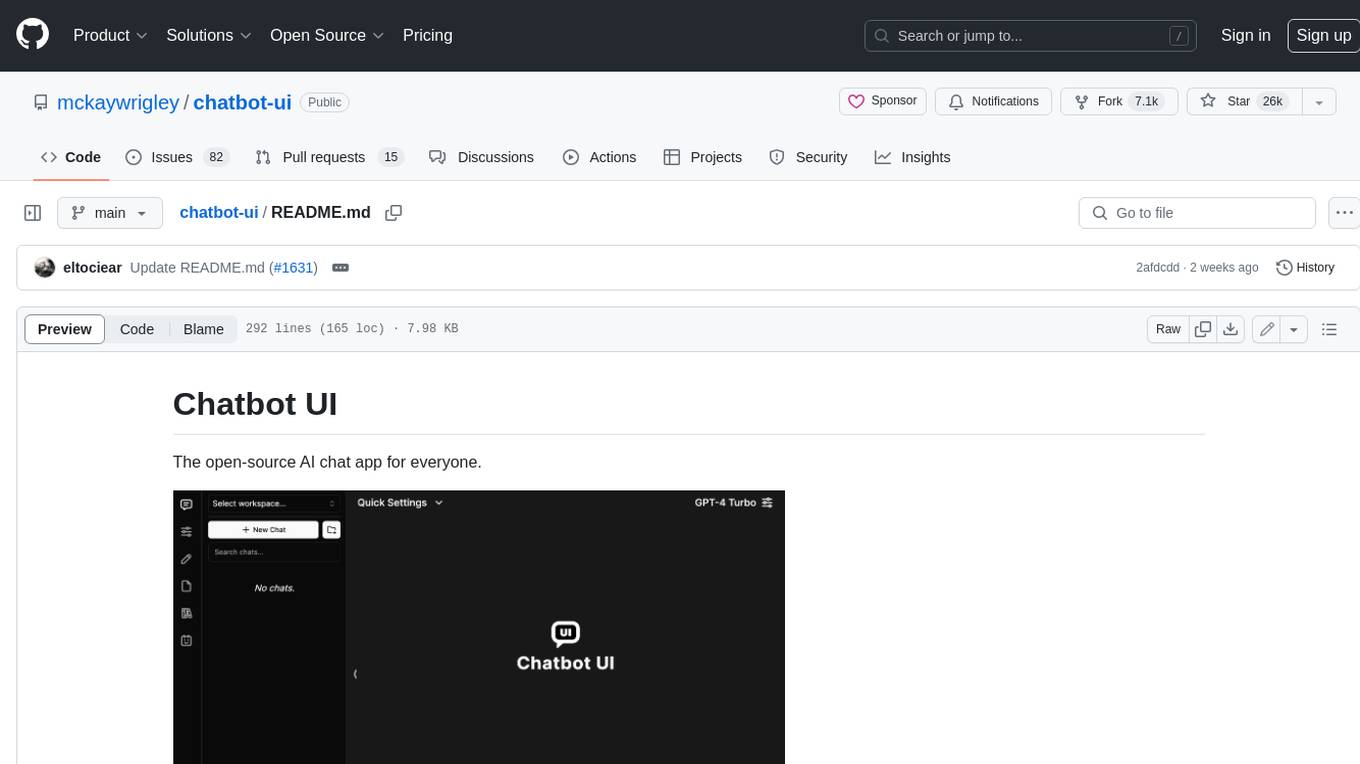
chatbot-ui
Chatbot UI is an open-source AI chat app that allows users to create and deploy their own AI chatbots. It is easy to use and can be customized to fit any need. Chatbot UI is perfect for businesses, developers, and anyone who wants to create a chatbot.
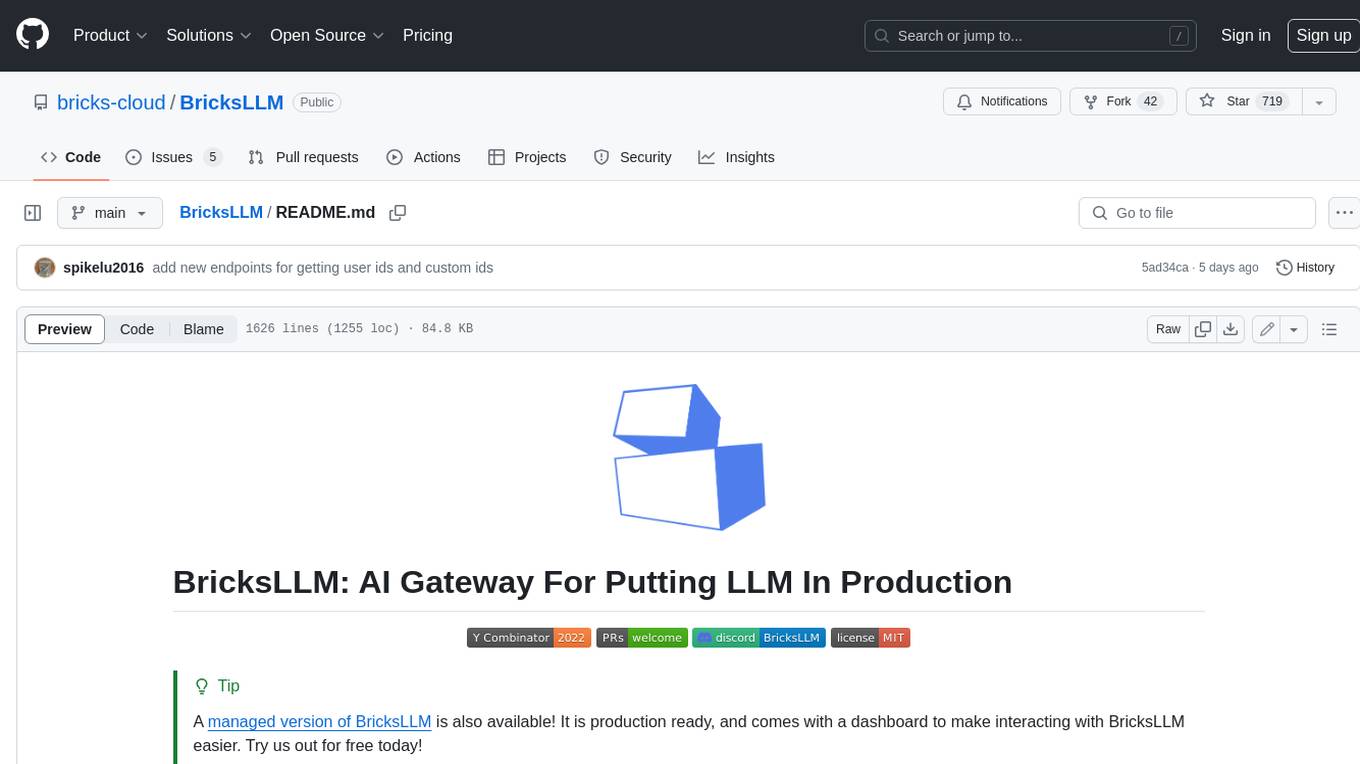
BricksLLM
BricksLLM is a cloud native AI gateway written in Go. Currently, it provides native support for OpenAI, Anthropic, Azure OpenAI and vLLM. BricksLLM aims to provide enterprise level infrastructure that can power any LLM production use cases. Here are some use cases for BricksLLM: * Set LLM usage limits for users on different pricing tiers * Track LLM usage on a per user and per organization basis * Block or redact requests containing PIIs * Improve LLM reliability with failovers, retries and caching * Distribute API keys with rate limits and cost limits for internal development/production use cases * Distribute API keys with rate limits and cost limits for students
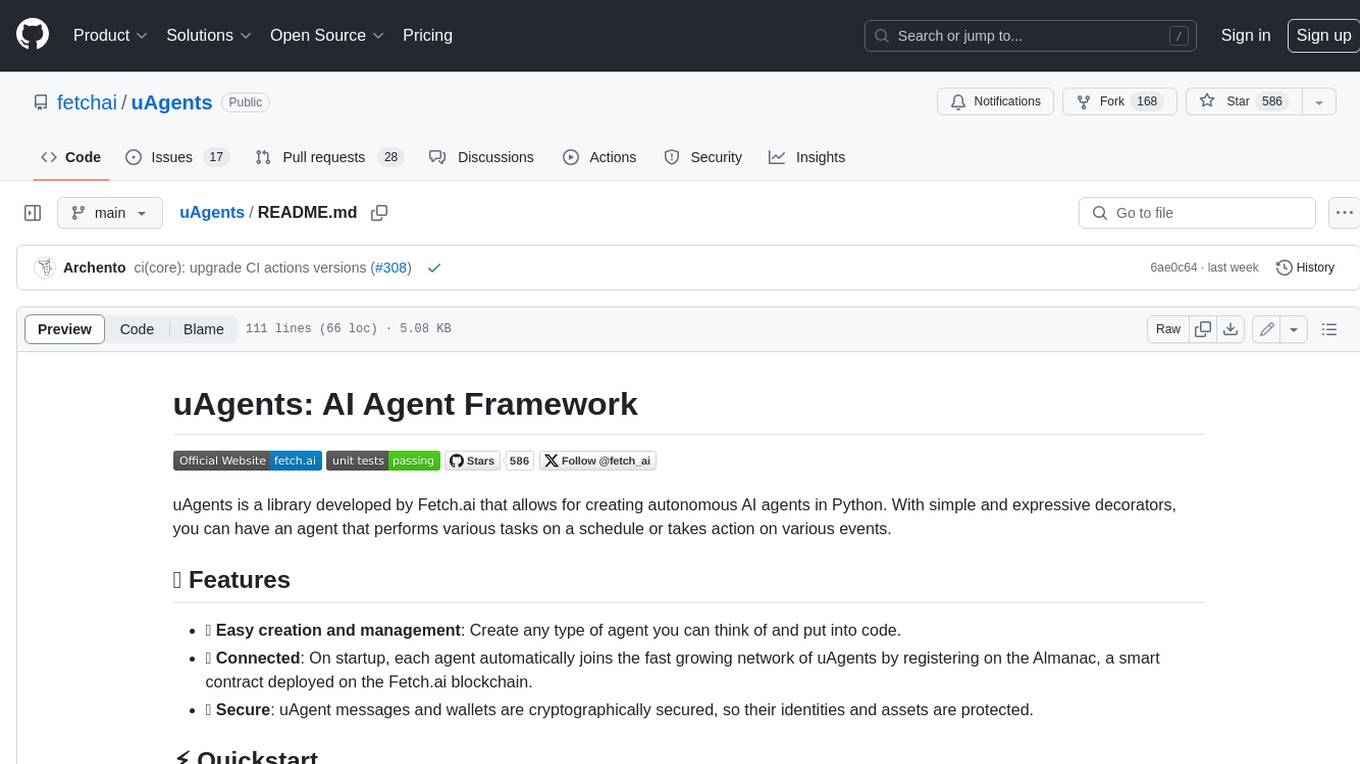
uAgents
uAgents is a Python library developed by Fetch.ai that allows for the creation of autonomous AI agents. These agents can perform various tasks on a schedule or take action on various events. uAgents are easy to create and manage, and they are connected to a fast-growing network of other uAgents. They are also secure, with cryptographically secured messages and wallets.

griptape
Griptape is a modular Python framework for building AI-powered applications that securely connect to your enterprise data and APIs. It offers developers the ability to maintain control and flexibility at every step. Griptape's core components include Structures (Agents, Pipelines, and Workflows), Tasks, Tools, Memory (Conversation Memory, Task Memory, and Meta Memory), Drivers (Prompt and Embedding Drivers, Vector Store Drivers, Image Generation Drivers, Image Query Drivers, SQL Drivers, Web Scraper Drivers, and Conversation Memory Drivers), Engines (Query Engines, Extraction Engines, Summary Engines, Image Generation Engines, and Image Query Engines), and additional components (Rulesets, Loaders, Artifacts, Chunkers, and Tokenizers). Griptape enables developers to create AI-powered applications with ease and efficiency.
